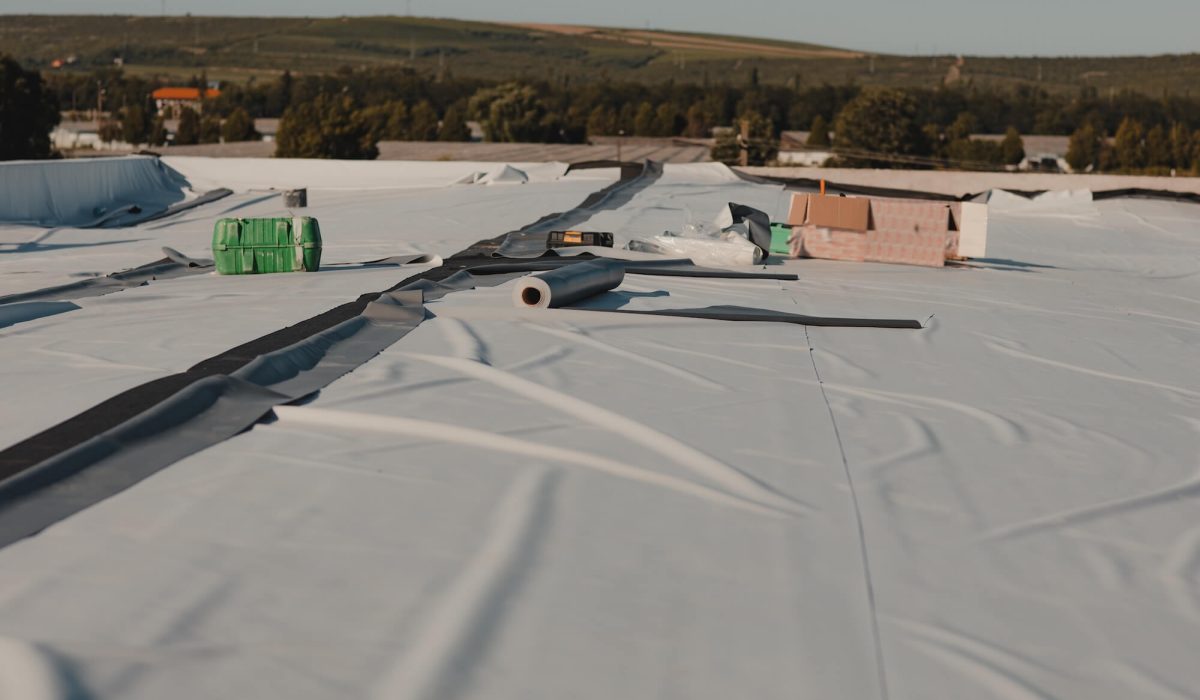- By Premier Admin
- Commercial Roofing, Commercial Roofing Services, Repairs
- 0 Comment
As a Denver property manager, keeping your building watertight and energy-efficient is always top priority. But when your TPO roof begins showing signs of wear, how do you know whether it’s time for a repair—or a full replacement?
This guide breaks down the signs, costs, and long-term considerations to help you make the best decision for your building and your budget.
Understanding the Life Cycle of a TPO Roof
Thermoplastic Polyolefin (TPO) is a single-ply roofing membrane known for its durability and reflective energy efficiency. In Denver’s high-altitude climate, a well-installed TPO roof typically lasts 20–25 years. However, our region’s freeze–thaw cycles, hail, and UV exposure can shorten that lifespan without proper maintenance.
Typical lifespan factors include:
- Installation quality and insulation type
- Roof slope and drainage
- Exposure to direct sunlight and hail
- Frequency of inspections and repairs
Common Signs Your TPO Roof Needs Attention
For Denver property managers, catching roofing issues early is critical. Timely repairs prevent costly water damage, mold growth, and heat loss, all of which can escalate quickly in Colorado’s unpredictable weather. A proactive inspection schedule ensures your TPO system stays watertight and energy-efficient year-round.
- Seam Separation
TPO roofs are heat-welded along the seams. Over time, thermal expansion and contraction can cause these seams to pull apart—leading to leaks.
- Membrane Cracking or Shrinkage
Denver’s dry climate and high UV index can cause the membrane to shrink or crack, especially on older systems.
- Ponding Water
If water sits for more than 48 hours after a storm, it’s a sign of poor drainage or insulation compression beneath the membrane.
- Punctures and Tears
Foot traffic, equipment installation, or hail can damage the membrane, allowing moisture to seep in.
- Energy Bill Spikes
A sudden rise in cooling costs may mean the reflective coating is wearing down, reducing your roof’s energy efficiency.
Repair or Replace? Key Decision Factors
Choose Repair If:
- Damage is localized (less than 20% of the surface area)
- Seams are intact, and insulation is still dry
- Roof is under 15 years old
- Budget is limited but you need short-term protection
Cost Range (Denver average):
Minor patch or seam repair – $7–$10 per sq. ft.
Section replacement – $10–$14 per sq. ft.
Repairs can extend roof life by 3–7 years when performed by a qualified commercial roofing contractor.
Choose Replacement If:
- Roof is 18–25+ years old
- Insulation or decking is water-damaged
- There are multiple active leaks
- Repairs are becoming more frequent and costly
- You’re planning a major building retrofit or sale
Replacement Cost Range:
Full TPO replacement – $10–$16 per sq. ft., depending on insulation type and membrane thickness.
While replacement is a bigger upfront investment, it often reduces long-term maintenance and improves overall energy efficiency.
How Denver’s Climate Impacts the Decision
Denver’s 300+ days of sunshine and dramatic temperature swings—from freezing winter mornings to 90°F summer afternoons—create some of the harshest roofing conditions in the country. These extremes make TPO roof performance heavily dependent on proper installation, seam integrity, and UV resistance.
- UV degradation: Accelerates membrane brittleness if coating isn’t maintained.
- Freeze–thaw cycles: Can cause expansion at seams and flashings.
- Hail and snow: Increase puncture and drainage risks.
Because of these combined stressors, regular commercial roof inspections—especially before and after winter—are critical to catching small issues early. Annual inspections allow professionals to reseal seams, repair punctures, and reapply reflective coatings before damage spreads, protecting both your roof system and your bottom line.
Maintenance Tips to Extend Your Roof’s Life
- Schedule professional inspections every spring and fall.
- Keep drains and scuppers clear to prevent ponding water.
- Limit roof access to maintenance personnel only.
- Address small punctures or seam gaps immediately.
- Reapply reflective coating if the membrane shows discoloration.
In Denver’s demanding climate, a preventative maintenance plan is your best investment. Regular inspections and upkeep can delay roof replacement by years—saving thousands in repair costs while preserving warranty coverage and energy performance.
Denver Property Manager Tip
If you manage multiple buildings, track roof condition and repair history in a maintenance log. When the cost of repairs in a single year exceeds 25–30% of the replacement estimate, replacement is typically the more economical choice.
When in Doubt — Get a Professional Inspection
Before committing to repairs or replacement, schedule a TPO roof inspection from a certified Denver commercial roofing contractor. They can provide infrared moisture scans, core samples, and a detailed condition report to guide your decision.
Premier Restoration & Construction specializes in TPO roof repairs, replacements, and inspections for Denver’s commercial and industrial buildings. Our team offers honest evaluations, detailed cost breakdowns, and solutions built for Colorado’s demanding weather. Don’t wait for leaks to spread. Contact our Denver commercial roofing experts for fast, honest service.


